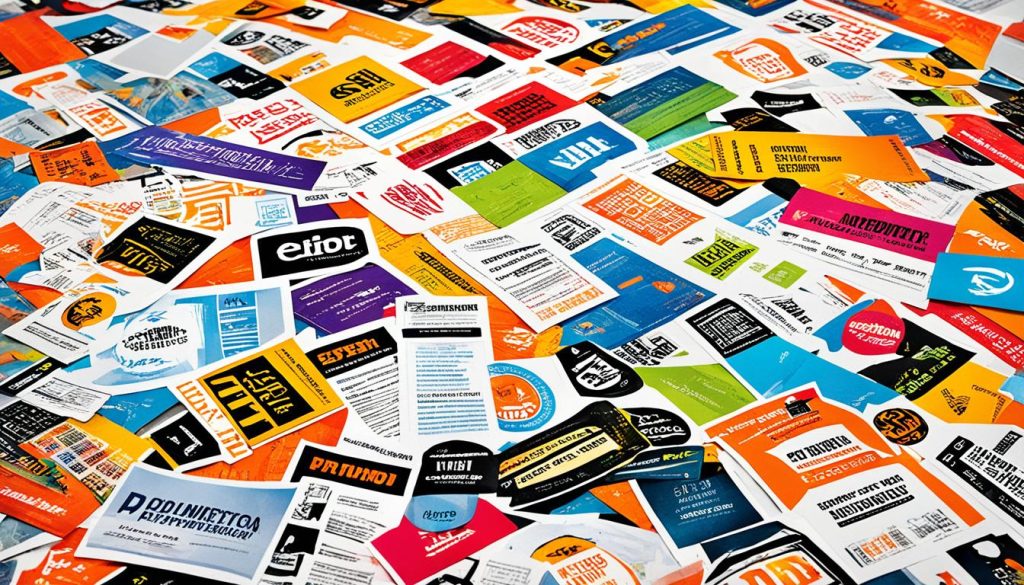There are over 31.7 million bloggers in the U.S. alone. If you want to start a successful blog, you need to know about the costs. It’s key to plan and budget carefully to make your blog work.
Running a blog can be a great way to share your ideas and passions. It helps you build a name as an expert, make money, and meet new friends. But, before you start, you must learn about the expenses involved and how to handle them. This article shares tips on managing the costs of blogging.
Costs like domain and hosting fees, creating content, and marketing can add up fast. Whether you’re blogging for fun, as a side gig, or as your main job, it’s important to know these costs. This knowledge will help you make a budget and be successful in the long run.
Understanding the Cost of Blogging
Starting a blog involves thinking about its costs. For a hobby blog, small project, or big business, knowing what it takes can guide your spending. This helps you make smart choices for your financial future.
Blogging Startup Costs
The money to start a blog changes a lot, based on what kind you want. Those with a hobby may spend about $34.50 to begin. People doing it on the side might pay around $65.40. If it’s your main gig, you could shell out close to $941.40 at the start.
Starting costs can include a laptop for $200, and fees for your website’s name and place on the internet. These can be up to $2.95 a month. You might also buy a design for your site, which could be free or up to $49. To add cool features, like an online shop or extra security, you might pay up to $217 more.
Ongoing Blogging Expenses
Keeping a blog going also has its costs. These are things you pay for every month:
- Email tools, from $0 to $41
- Keeping your site safe, which can be $0 to $240
- Tools to help you write or design, from $0 to $2,217
- Ads to get noticed, $0 to $1,000
- Content, from articles to paid help, $0 to $500
- Help with money, like taxes and law, $0 to $500
- Small stuff you might forget, like travel or snacks, up to $370
With a clear idea of what’s ahead, crafting a budget is easier. This way, you can manage costs as you chase your blogging dreams. Whether you aim for a life of luxury or just to make ends meet, preparing is key.
Domain Name and Web Hosting
Picking a domain name and hosting your blog are the first big steps. A domain name is your blog’s unique online address. Web hosting brings your blog online. These Blogging Costs can really affect your budget.
Domain Name Registration
The price to register a domain name varies a lot. You might see prices from $0.99 to over $10. This depends on the Top-Level Domain (TLD) you pick. Common TLDs like .com or .org are more expensive. But, lesser-known TLDs could be cheaper. Remember the yearly renewal cost of your domain when Budgeting for Blogs.
Web Hosting Services
Web hosting can also greatly change your spending. Prices can go from $1.99 to over $280 a month. This depends on what features you need. Shared hosting is cheaper, starting at $1.99 a month with Hostinger. This is why many bloggers choose it to save. When making your budget, also remember the yearly renewal costs of hosting plans.

Content Creation Expenses
Creating engaging content is key for a blog’s success. However, it often comes with a high price tag. Costs for content creation include:
Writing and Research
If writing isn’t your strong suit, you might hire a skilled writer. This could cost from a few hundred to several thousand dollars. The total depends on the content’s length and the writer’s experience.
You might also need to buy research materials. This ensures your content is both accurate and informative.
Visual Content
Successful blogs often use visual content like images, infographics, and videos. The costs can add up. Creating visual content might include:
- Stock photography or illustrations: Prices vary, with subscriptions from a few dollars to hundreds
- Design software like Adobe Creative Cloud, Canva, or Snapseed: These come with monthly or yearly fees
- Video production needs like a quality camera and editing software: These can cost from several hundred to several thousand dollars
- Outsourcing to professionals for graphic design or videography: This could also range from a few hundred to several thousand dollars per project
When budgeting for your blog, remember to include both written and visual content. This will help your blog stand out and connect with your audience.
https://www.youtube.com/watch?v=wwIJdi3N3qw
Website Design and Development
Your blog site’s look and features greatly affect how users enjoy and Monetizing your Blog. The cost of making or updating a site varies a lot. This depends on what you need and your tech skills. The price for website design and development can vary widely.
For a simple blog that uses a template, you might pay up to $1,000. A more basic site could cost $10,000 to $20,000. Want something average? Be ready to spend $40,000 to $100,000. For a sophisticated site, you could end up paying over $150,000.
The costs of building a website change based on who you hire. This could be a team at your place, a local group, a far-away team, or a single person. Teams usually cost about $90,000, local agencies might charge $120,000, and far-away teams ask around $40,000. A single freelancer might charge about $30,000.
Site building costs also change from place to place. In Australia, people might charge $80-$120 for an hour’s work. In the USA, prices could be $100-$150 per hour. Over in the UK, it is $90-$120 per hour. And in Western Europe, prices could range from $70-$100. If you’re looking to save some money, consider places like Ukraine ($40-$80) or India ($10-$40) per hour.
Costs for making well-known sites differ too. Building a site like Amazon could cost $50,000 to $150,000. Facebook‘s price tag might be $50,000 to $80,000. Airbnb could range from $100,000 to $150,000. Sites like Fiverr may cost $50,000 to $70,000, and Zillow might come in between $60,000 to $80,000.

Email Marketing and Automation
Creating an email list and keeping in touch with your readers through email is key to blogging. Email marketing involves some costs. You’ll need to pay for services that help you send emails. This includes the bill from the email service provider. You might also spend money on growing and organizing your email list.
Email Service Providers
A good email service provider is a must for your blog’s email marketing. They charge you either monthly or yearly. The amount you pay depends on how big your list is and what functions you need. Services like Mailchimp, Constant Contact, and Aweber have many plans. You can pick the one that fits your blog’s size and budget.
List Building and Segmentation
Along with the email service provider cost, you’ll also need to consider list-building expenses. For example, you might use ebooks or special content to get people to sign up for your emails. These are called lead magnets. Then there are costs for organizing your list, like setting up targeted email campaigns. By working on your email list regularly, you can make your email marketing work better. This can turn more readers into fans and buyers of your blog.
Overall, the cost of email marketing can change a lot. It depends on your list size, what you want to do, and your strategy. Yet, the rewards of having a great email marketing plan are big. You might see improved reader experiences, save time, and make better choices based on data. So, it’s often a smart move for bloggers to invest in email marketing.
Advertising and Promotion
Promoting your blog brings more people to read your content. It helps you get noticed and make money. Costs include things like:
Social Media Advertising
With Facebook, Instagram, Twitter, and LinkedIn, you can reach new readers through paid ads. It costs from $0 to $1,000 a month. This depends on who you’re trying to reach and your ad goals.
Influencer Marketing
Working with key influencers in your area boosts your credibility and audience. It can cost from $0 to $1,000 or more each campaign. This depends on the influencer’s reach and how deeply you plan to collaborate.
| Advertising Channel | Estimated Cost Range |
|---|---|
| Social Media Ads | $0 – $1,000 per month |
| Influencer Marketing | $0 – $1,000 per campaign |
Investing in advertising and promotion can grow your blog’s audience and engagement. You’ll need to try different strategies to see what works best for you. Finding the right method for your niche and audience is key.

Search Engine Optimization (SEO)
Improving your blog for search engines can boost your traffic and make you more visible online. This process includes using keyword research tools. You need these tools to find the best keywords for your topic. Some are free, like Google Keyword Planner, while others, like Ahrefs or SEMrush, cost around $100 a month.
Keyword Research Tools
Keyword tools are key to understanding what people search for and how you can stand out. They tell you how many are searching for a word or phrase, how tough the competition is, and whether you have a shot at ranking high for it. This is critical for topics like business of blogging, can blogging make you rich, and others in the blog sphere.
Link Building Strategies
Bloggers also often invest in building quality links to do better on search engines. This can mean reaching out for guest posting chances or using backlink analysis tools to find solid links. The cost might include sending emails to ask for guest posts and using tools to track your links.

Analytics and Tracking Tools
Knowing how your blog is doing and who your readers are is key. It helps make smart choices and improve how you spend money on making content and advertising. The costs for analytics tools subscriptions vary. Some tools are free, others start at a few dollars a month, and more advanced options can be quite expensive.
- Google Analytics – a free, top-notch service for getting to know your site’s traffic and what users do.
- Mixpanel – a strong tool for tracking how people use your site, starting at $25 a month.
- Kissmetrics – for deep insights into customer behavior, beginning at $299 per month.
- Adobe Analytics – an extensive, high-level analytics tool; prices available upon request.
- Matomo (formerly Piwik) – a self-hosted, open-source option, or a hosted one that starts at €19 per month.
- Open Web Analytics – a flexible, open-source framework for web analytics.
- Woopra – for tracking the customer journey, with both free and premium plans.
- Hotjar – provides insights into the user experience, with a free plan and paid features.
These tools show the range available for bloggers. They come with various features and prices. This variety means there’s something for everyone, no matter their budget or needs. Analytics tools subscriptions can help with everything from making money to understanding how people interact with your blog.
| Analytics Tool | Pricing | Key Features |
|---|---|---|
| Google Analytics | Free | Comprehensive web analytics, user behavior tracking, custom reporting |
| Mixpanel | Starts at $25/month | User engagement tracking, funnels and conversion analysis, cohort analysis |
| Kissmetrics | Starts at $299/month | Customer journey analysis, user segmentation, advanced attribution |
| Adobe Analytics | Price available on request | Enterprise-level analytics, data integration, complex visualizations |
| Matomo | Free self-hosted, €19/month hosted | User privacy-focused, customizable dashboards, API integration |
| Open Web Analytics | Free | Open-source, customizable, supports e-commerce and social media tracking |
| Woopra | Free up to 500K actions/month, $999/month | Customer journey mapping, real-time analytics, funnel optimization |
| Hotjar | Free forever plan, paid plans available | Heatmaps, session recordings, feedback tools, conversion funnels |
The many analytics tools subscriptions out there meet a wide variety of blogger needs. They make it easier for bloggers to find the right tools. These tools help with creating better content, running a more effective business, and understanding readers better. It’s all about matching the tool to the job at hand.

Planning for Common Blogging Expenses
Starting a blog needs a thorough budget. Without it, you might face money troubles. According to a survey by CB Insights, around one-third of startups fail because they run out of money.
Budgeting for Startup Costs
Your blog’s online presence is key first. This means getting a domain name and web hosting. Domain prices differ, from a few dollars to hundreds, based on the domain type and customization level. For hostings, you could start with shared hosting for a few dollars per month. But, if your blog becomes more popular, you might need to upgrade to better hosting solutions.
Content creation is a big cost too, such as hiring writers, designers, or videographers. This cost can go high quickly. In fact, startups often use more than half of their money for employee salaries. For example, an engineer in the Bay Area may earn around $154,000.
Ways to save on startup expenses are available. You can use freelancers and benefit from programs like AWS Activate. This program helps by providing cloud services credits and support to companies. By being smart about your budget, your blog can build a strong foundation for success.

